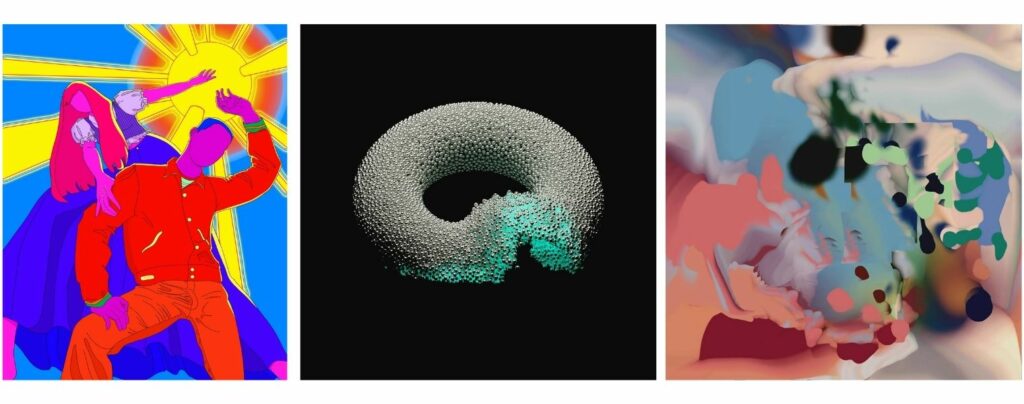We use cookies to improve your experience. By continuing to use this website you agree to our cookie policy.

The art world and cryptocurrency have in common that they are rapidly evolving, side by side. NFTs or non-fungible token is a digital asset in the crypto world that can be sold online and displayed digitally. Each NFT is unique as far as the individual version that exists on the blockchain. However, as with traditional art, there is only one ‘original’.
Most commonly, NFTs come in digital art (although even an autographed tweet by the founder of Twitter recently sold as one). They support the notion that all artists should have control over and own the rights to their work. And, of course, they allow people to support their favourite artists financially.
Others might invest in crypto art, hoping that it will eventually increase in value and earn them a profit. Between April 12 and July 15 2021, the value of NFT sales increased dramatically. As of April 12, sales had generated a value of nearly 64 million dollars. By July 15, the aggregated sales value amounted to roughly 31.5 million, according to Statista.
The rise of digital art: How NFTs are transforming the art space
They might seem like an unlikely duo, but together, the merging of art and cryptocurrency is set to transform the art world radically. This is partly due to the added layer of safety that crypto offers. According to a 2014 report by The Fine Arts Experts Institute (FAEI), 50% of artworks are incorrectly attributed or forged.
NFTs are recorded on the blockchain, essentially an encrypted public database where all transactions are registered. For artists and buyers, the blockchain serves as a virtual certificate of authenticity.
Although people have been making NFTs since the Tumblr era in 2014, when digital art images were mindlessly “reblogged” by users, scarce of attribution or context, it is only now that these artworks are being monetised.
These artworks would be a product of “hackathons” within the tech industry, during which artists pull all-nighters to produce a prototype to be then shared with the online world.
The digital art world has come a long way since Tumblr, but NFTs have proven to be a natural source of income for digital artists.
It means they can enjoy selling their art to consumers (directly and free of fees) without the need to present in traditional spaces, i.e. galleries and auction houses.

Months before the NFT trend, artist Jazmine Boykins was sharing her artwork online for free. The digital artist focused on creating visionary art surrounding Black lives, which ranked up the ultimate passion of viewers.
Thanks to NTFS and technology, Boykins has earned the income she deserves for her art. “At first, I didn’t know if it was trustworthy or legit,” says Boykins, who has sold more than $60,000 in NFT art over the past six months. “But to see digital art being bought at these prices, it’s pretty astounding. It’s given me the courage to keep going.”
Digital art has always been considered undervalued due to it being widely available online. NFT’s are changing that approach by giving artists and creators more credit for their works and giving collectors and buyers a chance to invest in artwork like never before, with the hope of future price appreciation.
